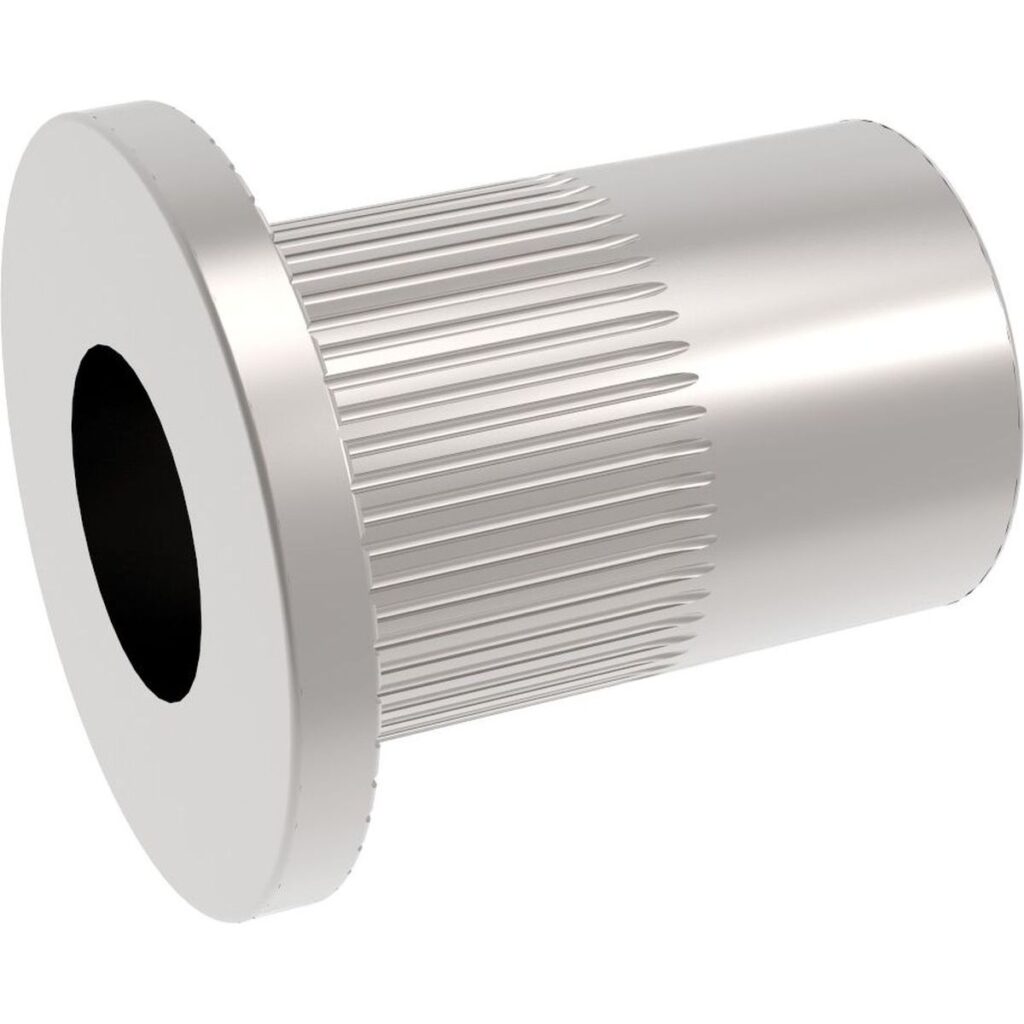When I bought my second car, the boot was basically a sheet of rust that I put my hand through without realising just how bad it was. I needed to secure the number plate on the replacement boot, so I chose a rivnut.
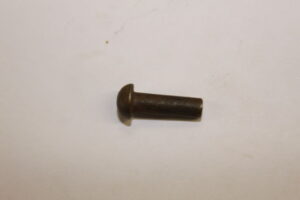
Solid Rivets
Solid rivets have been used since the Industrial revolution to hold two plates of steel together. The rivet is heated and pushed through the hole, then held in place while the narrow end is hammered into a dome shape. As the solid rivet cools down, it pulls the two plates together.
These are commonly used to hold bridges together, on ships and in boilers which can withstand high pressure, although if the pressure gets too great, either the rivet fails or the plate tears at the holes drilled to hold the rivet.
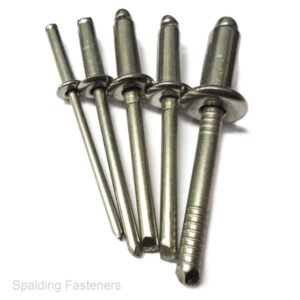
POP Rivets
POP Rivets (so called because of the POP company that created them – now part of Stanley Black & Decker) are blind rivets that are inserted cold into a pre-drilled hole between two pieces of metal.
The blind rivet tool is inserted over the mandril (the bit in the middle) and the mandril is pulled, this drives the back of the mandril through the rivet causing it to give and expand to bind the two materials together. Once the rivet has expanded, the mandril is sheared off leaving the rivet binding.
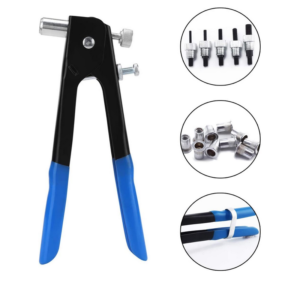
Rivnut - Rivet Nut
The rivnut (rivet-nut) is a combination of rivet and nut. Just like with a blind rivet, the rivnut is inserted in the hole but only on the holding material side.
The threaded insert is threaded into the nut and secured in the tool. The tool is then closed which pulls on the thread and crushes the rivet into the hole. The insert can then be undone and then the item can be held
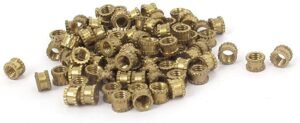
Brass knurl thread insert nuts (knurls)
Brass knurl thread insert nuts (simply called knurls) provide plastic with the strength to hold machine screws. During the injection moulding process, the plastic is still soft, so an brass insert is pushed into the plastic. When the plastic cools, it hardens around the insert providing the perfect mounting point for a machine screw to be added later to secure a part in place.
You may find self tapping screws being used to hold plastic parts together. This is because the part doesn’t need strength to hold together, so it’s cheaper to use a single screw than it is to insert a brass knurl and machine screw later.
Recycling
If you are planning to chip up plastic to reuse it, say for a 3d printer, brass knurls are not your best friend. They are non-ferrous metals so can’t be removed using a magnet when the plastic is hot.
Since you will be using thermoplastic (where we get the word plastic from), heating the knurl is the easiest way to extract it. Thread a screw into it and heat with a heat gun and pull with pliers to remove. It’s a slow process if you have a lot of knurls to remove, but much faster than trying to break or saw them out.
Don’t bother with thermoset plastic, you need to smash them out for that plastic, but you can’t re-use thermoset in the same way anyway.

